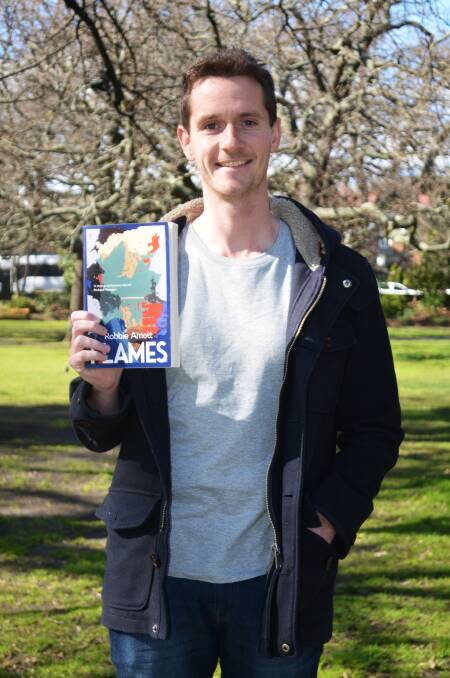
To outsiders, Tasmania can already seem like a fantastical place.
Subscribe now for unlimited access.
or signup to continue reading
Alien landscapes sprout all over the central highlands, with cushion plants and pandani and bizarre mosses found nowhere else on earth. The planet’s largest mammals brush past our shores, while deep in caves, microscopic living creatures have remained unchanged for 230 million years. There are ancient ecosystems, snarling marsupials, and trees that touch the sky.
But the fantastical is turned up even more in Launceston author Robbie Arnott’s book Flames. It’s a work of magical realism set all across Tasmania that blends fantasy and reality. The reader is never quite sure what is fact, and what is fiction.
From wombat farms at Melaleuca, to Hawley fisherman bonding with fur seals and hunting shark-sized tuna, the book sees Arnott’s imagination running wild in the places he grew up.
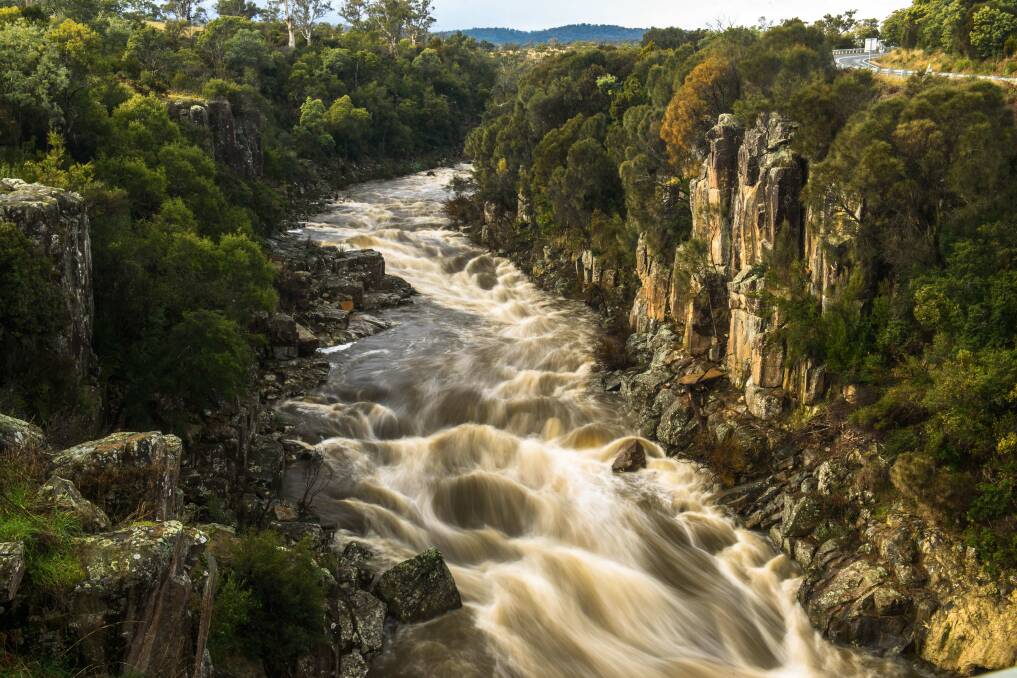
“I did have some friends from the mainland ask me where they could come and see the fishermen who hunt with seals,” he laughed. “I had to explain to them that no, I made that up.”
“I wanted there to be a blurred line between what is real and what isn’t. I find that’s a very satisfying thing to read, when books have unspoken questions lingering in the pages. I think that’s why we often read a book – to experience something outside of our normal lives.
“It’s also a lot of fun.”
The central plot – about a girl named Charlotte who begins to leak fire – progresses in glimpses, from the perspective of a range of very different characters who come into contact with it. The chapters are self-contained vignettes, with elements of a larger narrative that whirls along at the edges, with many an unexpected dip and bend.
In this way, Arnott was also able to play with genre. Each chapter dips a toe into a different literary tradition: whichever one best suits the character whose world we are inhabiting for those pages. There is hard-boiled detective noir, folklore, romance, gossipy memoir, gothic horror, and straight fantasy, all in the one novel.
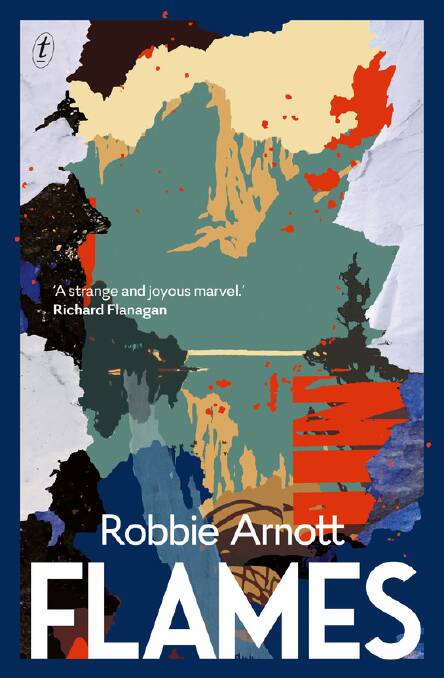
“I like to read books where you’re never sure what’s going on, and I wanted to write a book that I would want to read,” he said.
“In late 2016 I was trying to write a really normal Australian novel: a really realist book. I wasn’t having any fun, and I didn’t think anyone would enjoy reading it – this boring, typical Australian novel. So I decided to try and write something interesting and imaginative and different.
“I didn’t know if anyone else would want to read that, but I just trusted myself and did it.”
The events of the book are other-worldly extrapolations on Arnott’s real-life experiences.
Notley Fern Gorge is his favourite walk in Tasmania, so of course a chapter had to be set there.
Observing wombats with mange in their fur while exploring Nawantapu National Park got him thinking about wombat fur in general. What if it was farmed, like sheep’s wool? Let’s do a chapter on that.
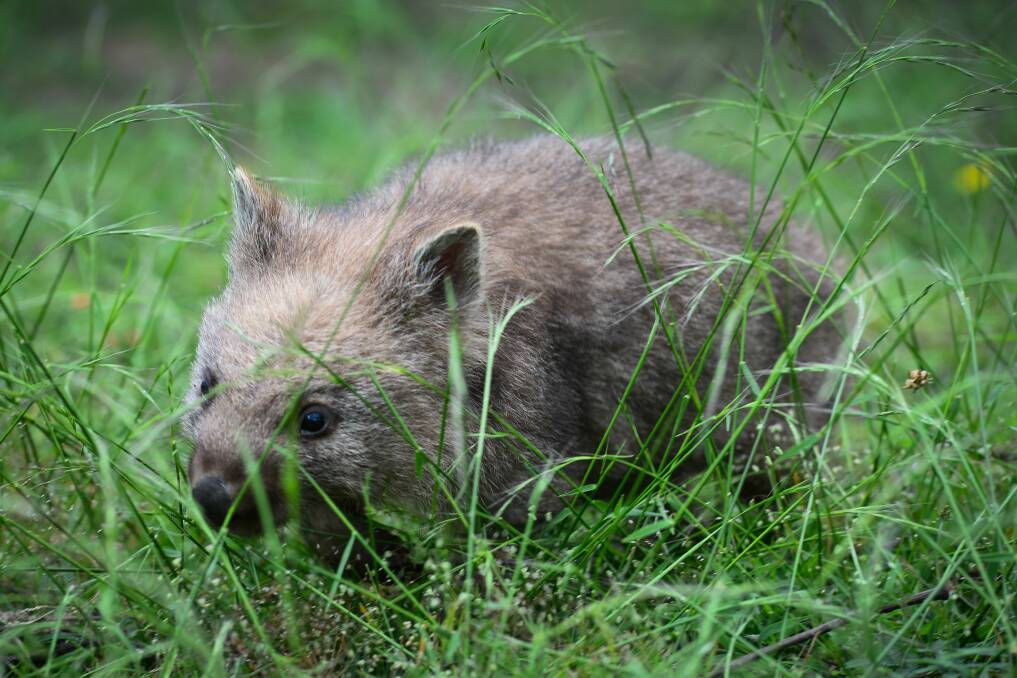
The sighting of a water-rat triggered a rumination that the underrated creature gets far less public attention than the beloved platypus. Why? Water-rats are interesting too! You know what, the water-rat deserves a chapter, and let’s make it a god.
The seal-fisherman thing came from observing a friend who lives at Carrick interacting with his kelpie, while undertaking normal farm work.
“The way they communicate with each other without having to say anything – I just found it mesmerising,” he said. “So I used my imagination to push that into the realm of a fisherman and a seal … because seals are just dog-mermaids, really.
“Being out in the natural world all my life, and experiencing that environment, made me want to write about it. But I didn’t want it to feel like a tourist guide, I wanted it to feel harsh and beautiful and, at times, inaccessible.
“I tried to illustrate the beauty and wonder around us by pairing magical elements with real things, and I wanted the real things to stand out as being just as incredible as the things I’ve made up. Because that’s how they feel to me.”
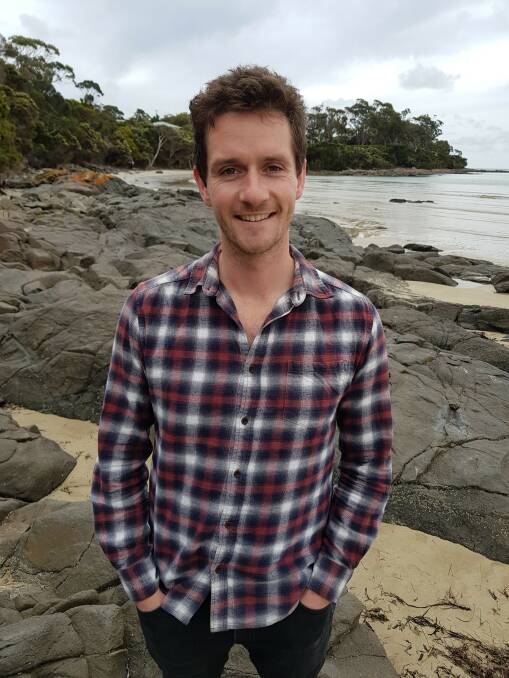
Arnott grew up in northern Tasmania, but now works in Hobart as a copywriter for an advertising agency.
In fact, Flames was penned at the same time as Arnott was working full-time.
At night and on weekends he could be found scribbling away or losing himself in the research for the book – much to the concern of his friends and family, who didn’t know he was writing a novel, and just thought he had grown to be somewhat odd.
“There’s one part of the book where I really wanted to describe a snowgum tree in a particular way, so I drove out to Derwent Bridge and just wandered around staring at snowgums,” he said. “At the time, it probably seemed like a giant waste of time.”
“Fortunately, my girlfriend was very supportive.”
One of Arnott’s favourite authors is Richard Flanagan, who he names as the biggest influence on his approach – particularly the postmodern work Gould’s Book of Fish.
So it was a surreal experience for him to receive a phone call from his publisher telling him that Flanagan not only liked the book, but would provide a quote for the front cover, and would speak at its launch.
He recalls running out of a training seminar in Adelaide and “forgetting how to breathe” when he received that nod of approval from his literary hero.
“I read Gould’s Book of Fish when I was probably 19, and it really changed the way that I think about fiction, and the way that you could write about Tasmania,” he said.
I wanted there to be a blurred line between what is real and what isn’t. I find that’s a very satisfying thing to read, when books have unspoken questions lingering in the pages.
- Robbie Arnott
“It’s such an imaginative piece of work. It’s fiction but it uses so many other techniques and made-up facts and doesn’t tell you if they’re true, and I just think it’s such a remarkable book.
“When I found out he liked the book and was going to do a little quote for it, I nearly had a heart attack. I’m not a particularly emotional person but yeah...it was wonderful.”
As for the future, Arnott is working on another book – but he can’t give anything away.
All he can reveal is that it will be a big departure from his debut, and is not set in Tasmania.
“I’m doing something very different this time,” he said.
IN OTHER NEWS:
While you're with us, did you know that you can now sign up to receive breaking news updates and daily headlines direct to your inbox. Sign up here.














